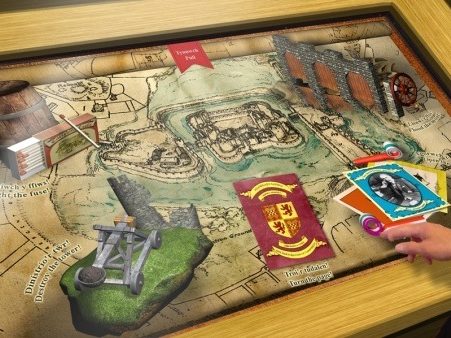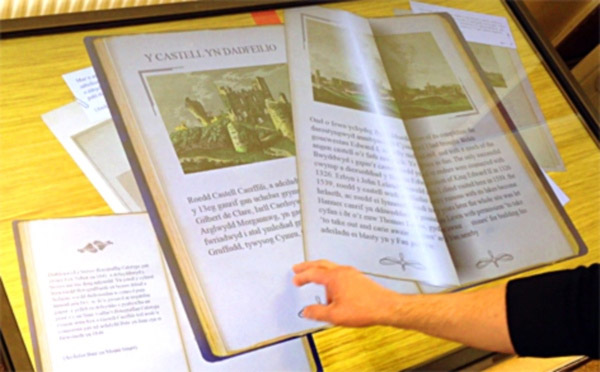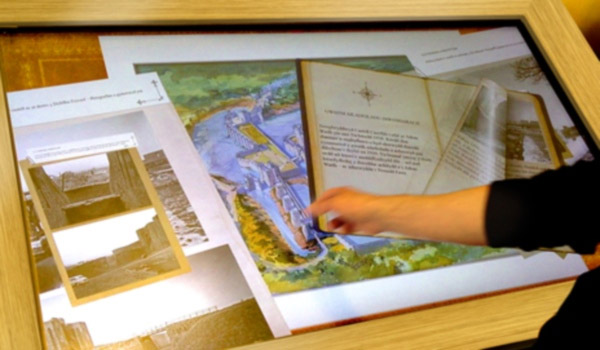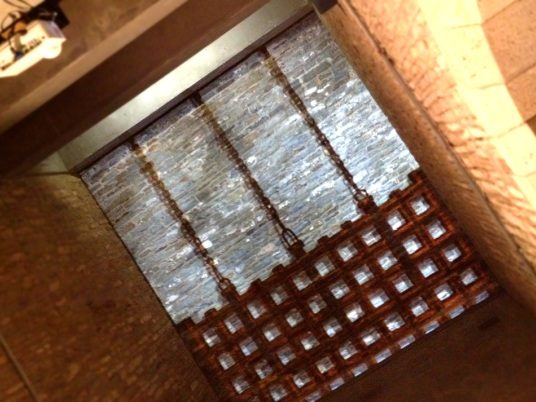As part of the Welsh Government’s plans to increase public access, enjoyment and participation in Wales’s heritage, Cadw has launched a series of new interpretation experiences at Caerphilly Castle, ranging from sculptured heads of historical characters, to light projections and sound effects, to improve the overall visitor offer of the site.
The castle, which is surrounded by a series of lakes, was built by Gilbert de Clare of Norman descent, and later restored by the 4th marquis of Bute, son of Lord Bute. The new interpretation features take an innovative approach to history, combining art and traditional interpretation techniques, to tell the rich and diverse stories of this slumbering giant.
John Griffiths, Minister for Culture and Sport explains the approach behind the £260,000 interpretation project at Caerphilly Castle: ‘From interactive siege warfare games and innovative touch screens, to models, sculptures and a 270 degree digital film, the new interpretation brings the stories to life, giving visitors an opportunity to learn about the monument in an imaginative and hands-on way.’
Multi-touch Table
Caerphilly has long stood out amongst British castles because of its grandeur and complexity. Once thought to be Roman because of the sheer size of its ruins, it was only in 1834 that the pioneering archaeologist G. T. Clark correctly identified it as a late-thirteenth-century fortress. But while its origins came to be recognized, it is only within recent history that its structure has been repaired and its setting renewed, allowing it to be seen once again as originally intended.
This multi touch table charts the restoration works funded and driven by the Bute family since they took ownership in 1776 and includes:
The castle, which is surrounded by a series of lakes, was built by Gilbert de Clare of Norman descent, and later restored by the 4th marquis of Bute, son of Lord Bute. The new interpretation features take an innovative approach to history, combining art and traditional interpretation techniques, to tell the rich and diverse stories of this slumbering giant.
John Griffiths, Minister for Culture and Sport explains the approach behind the £260,000 interpretation project at Caerphilly Castle: ‘From interactive siege warfare games and innovative touch screens, to models, sculptures and a 270 degree digital film, the new interpretation brings the stories to life, giving visitors an opportunity to learn about the monument in an imaginative and hands-on way.’
Multi-touch Table
Caerphilly has long stood out amongst British castles because of its grandeur and complexity. Once thought to be Roman because of the sheer size of its ruins, it was only in 1834 that the pioneering archaeologist G. T. Clark correctly identified it as a late-thirteenth-century fortress. But while its origins came to be recognized, it is only within recent history that its structure has been repaired and its setting renewed, allowing it to be seen once again as originally intended.
This multi touch table charts the restoration works funded and driven by the Bute family since they took ownership in 1776 and includes:



